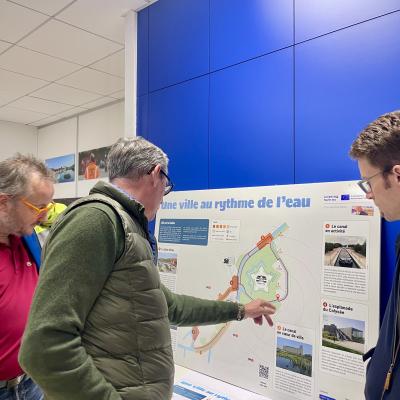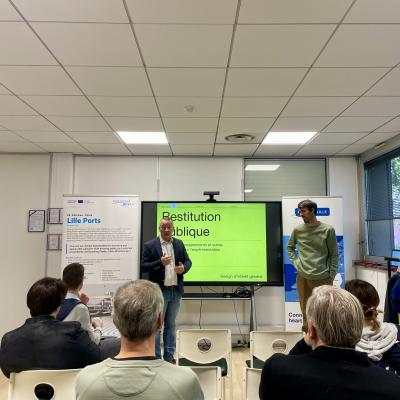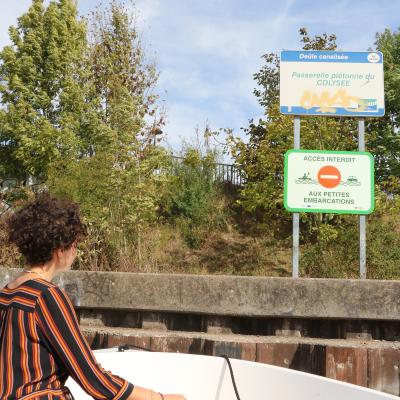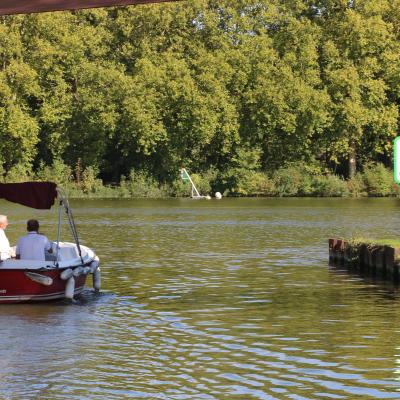After two months of field tests, Ports de Lille and its innovation coach — VRAIMENT VRAIMENT, presented the results of the experiments launched during the summer.
An opportunity to review the local stakeholders, share lessons learned, and suggest improvements.
Lessons Learned and next steps
Experiment evaluation: direct outreach to 60 individuals and online surveys gathered insights on both panels. Questioning their visibility, clarity, and impact.
What Worked:
- Clear messages: panels like “Priorité aux péniches” (Priority to barges) communicate clear messages about navigation rules.
- Stakeholders’ engagement: local partners embraced the initiative, recognizing its potential to reduce conflicts, ensure safety and enhance tourism.
- Touristic value: panels highlighting Lille’s fluvial heritage attracted tourists and made them want to discover the places and learn more about them.
Challenges and Adaptations to scale up:
- Visibility issues: some signs were not seen due to their location or size. Future experiments will pay more attention to the choice of locations and adapt the dimensions according to the messages and river widness.
- Diverse needs: feedback revealed a need to tailor panels to address specifically to user groups, from pedestrians to professional mariners.
- Refocus initiatives: Feedback showed us that to promote a fluvial heritage, the messages on panels need to provide precise and personalized information about the locations.
- Governance: beginning to define a shared governance framework to ensure long-term success.
Quotes from Partners:
“The panels helped our clients navigate safely while enjoying a tour on electric boats. It’s a win-win for safety and tourism!”— Marins d’eau Douce, Lille
“This project shows how small changes can make a difference in how we share the waterway.” — Métropole Européenne de Lille (MEL)
Next steps:
- Autumn 2025: extend experimentation, refine panel designs, and engage new partners like tourism offices and schools.
- End of 2025: provide stakeholders with tools and graphic material for integration into their communication and awareness materials.
- 2026: expand the initiative to new sites along the Deûle Canal and beyond, with a focus on security on the waterway, heritage valorization and sustainable tourism.
- Long-Term: develop a digital platform to coordinate waterway usage and share resources among stakeholders.
Source: Ports de Lille






